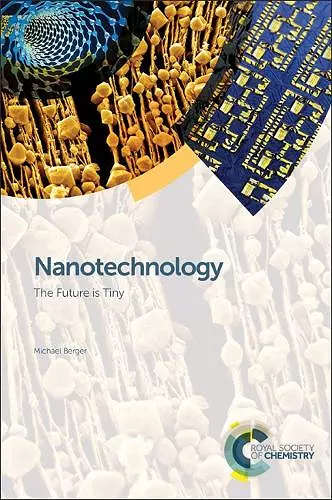Nanotechnology
The Future is Tiny
Format:Hardback
Publisher:Royal Society of Chemistry
Published:30th Aug '16
Currently unavailable, and unfortunately no date known when it will be back

Nanotechnology: The Future is Tiny introduces 176 different research projects from around the world that are exploring the different areas of nanotechnologies. Using interviews and descriptions of the projects, the collection of essays provides a unique commentary on the current status of the field. From flexible electronics that you can wear to nanomaterials used for cancer diagnostics and therapeutics, the book gives a new perspective on the current work into developing new nanotechnologies. Each chapter delves into a specific area of nanotechnology research including graphene, energy storage, electronics, 3D printing, nanomedicine, nanorobotics as well as environmental implications.
Through the scientists' own words, the book gives a personal perspective on how nanotechnologies are created and developed, and an exclusive look at how today's research will create tomorrow's products and applications. This book will appeal to anyone who has an interest in the research and future of nanotechnology.
I really liked this book and have no hesitation in recommending it as a really good read.
* Chromatographia (2017) 80:1821 *Once you start reading you will find it very difficult to stop.
* Chromatographia (2017) 80:1821 *The book is recommended not only to all interested scientists, but also to students who are looking for a quick and clear introduction to various research areas of nanotechnology
* Angewandte ChemISBN: 9781782625261
Dimensions: unknown
Weight: 730g
359 pages